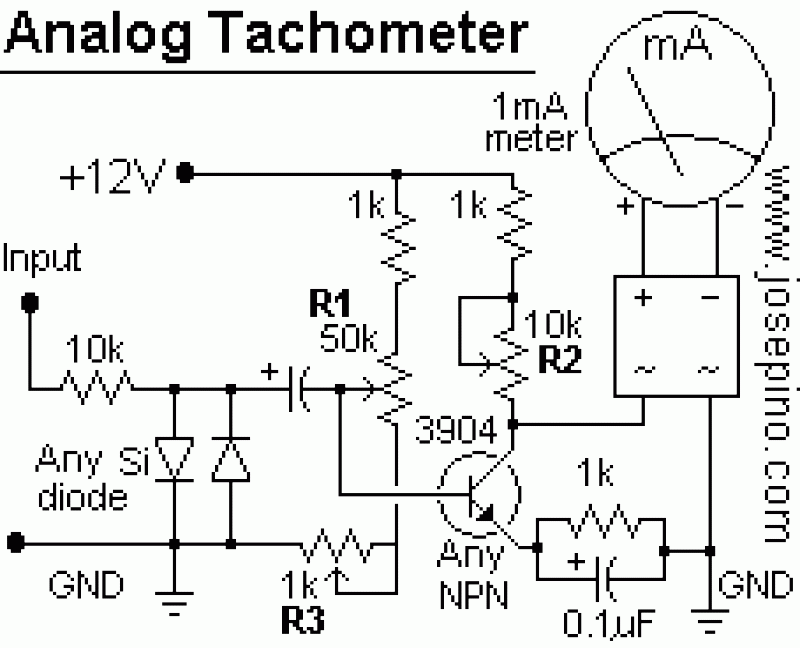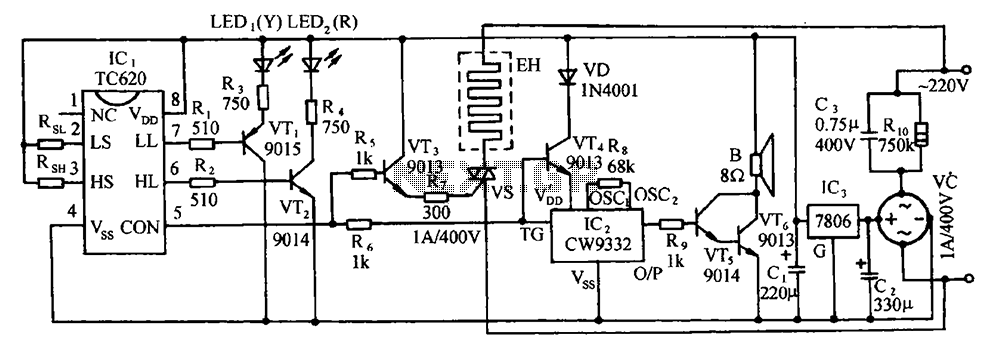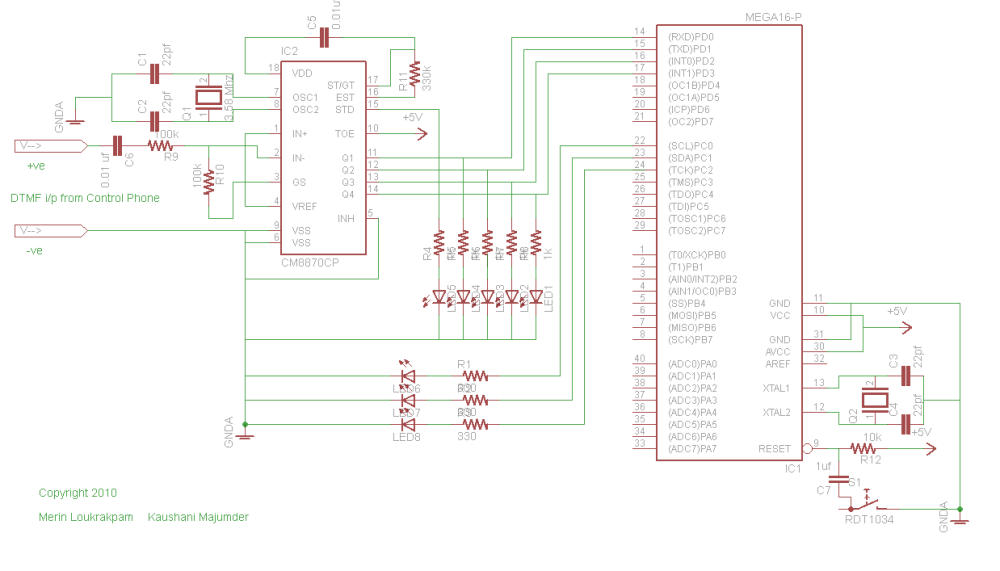
Wireless Auto Tachometer

Anyone performing their own automobile tune-ups knows how important it is to know your engine's speed. With this tachometer, you can measure your engine's speed without any connections or annoying timing lights.
The described tachometer is a non-invasive device designed for automotive applications, specifically for measuring the rotational speed of an engine. It operates on the principle of detecting the frequency of the engine's ignition pulses, which are directly correlated to the engine speed (RPM). The device typically includes a microcontroller or a dedicated integrated circuit (IC) that processes these pulses and converts them into a readable format.
The tachometer may utilize a sensor, such as a Hall effect sensor or an optical sensor, positioned near a rotating component of the engine, such as the crankshaft or camshaft. This sensor captures the magnetic or optical signals generated by the engine's moving parts. The output from the sensor is then fed into the microcontroller, which counts the number of pulses over a defined time interval.
To display the engine speed, the microcontroller calculates the RPM based on the pulse frequency and drives an LCD or LED display. The display often includes features such as backlighting for visibility in low-light conditions and the ability to switch between different measurement units (e.g., RPM and Hz).
Power supply considerations for the tachometer are crucial, as it must be able to operate reliably within the automotive environment, which can include voltage fluctuations and noise from the engine. The device may be powered by the vehicle's battery, typically requiring a voltage regulator to ensure stable operation.
Overall, this tachometer provides a convenient and efficient way for automotive enthusiasts and professionals to monitor engine performance without the need for cumbersome wiring or additional timing equipment. Its design focuses on ease of use, accuracy, and durability in the demanding conditions typically found in automotive environments.Anyone performing their own automobile tune-ups knows how important it is to know your engines speed. With this tachometer, you can measure your engines speed without any connections or annoying timing lights.
🔗 External reference
The described tachometer is a non-invasive device designed for automotive applications, specifically for measuring the rotational speed of an engine. It operates on the principle of detecting the frequency of the engine's ignition pulses, which are directly correlated to the engine speed (RPM). The device typically includes a microcontroller or a dedicated integrated circuit (IC) that processes these pulses and converts them into a readable format.
The tachometer may utilize a sensor, such as a Hall effect sensor or an optical sensor, positioned near a rotating component of the engine, such as the crankshaft or camshaft. This sensor captures the magnetic or optical signals generated by the engine's moving parts. The output from the sensor is then fed into the microcontroller, which counts the number of pulses over a defined time interval.
To display the engine speed, the microcontroller calculates the RPM based on the pulse frequency and drives an LCD or LED display. The display often includes features such as backlighting for visibility in low-light conditions and the ability to switch between different measurement units (e.g., RPM and Hz).
Power supply considerations for the tachometer are crucial, as it must be able to operate reliably within the automotive environment, which can include voltage fluctuations and noise from the engine. The device may be powered by the vehicle's battery, typically requiring a voltage regulator to ensure stable operation.
Overall, this tachometer provides a convenient and efficient way for automotive enthusiasts and professionals to monitor engine performance without the need for cumbersome wiring or additional timing equipment. Its design focuses on ease of use, accuracy, and durability in the demanding conditions typically found in automotive environments.Anyone performing their own automobile tune-ups knows how important it is to know your engines speed. With this tachometer, you can measure your engines speed without any connections or annoying timing lights.
🔗 External reference





